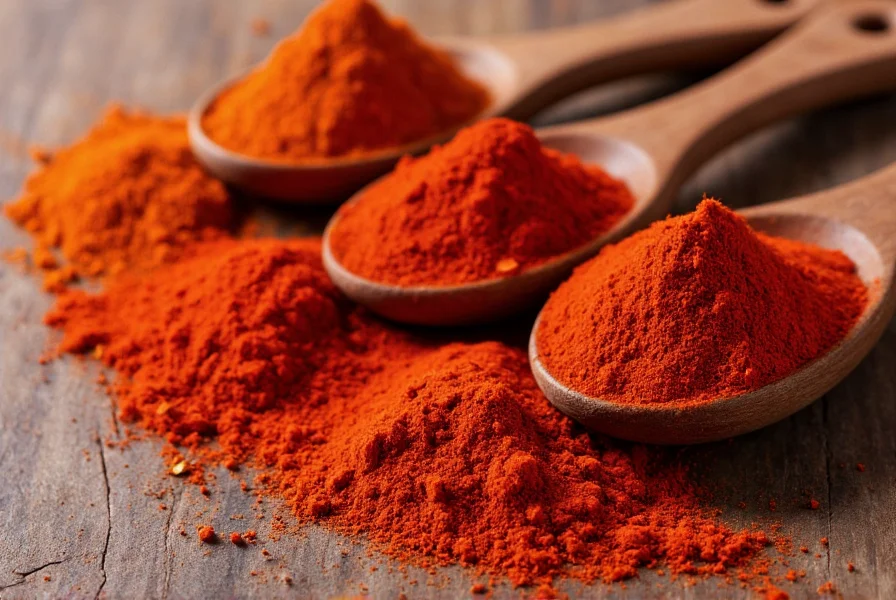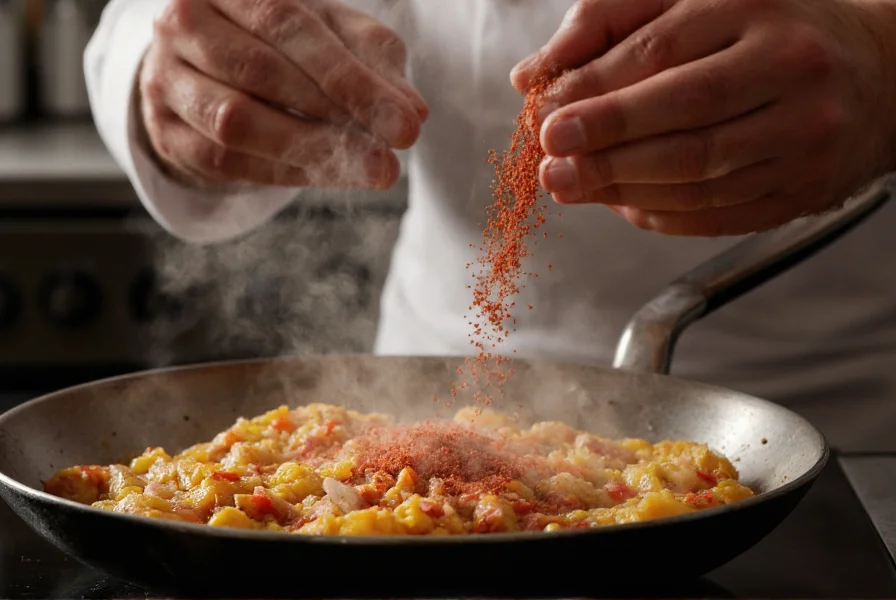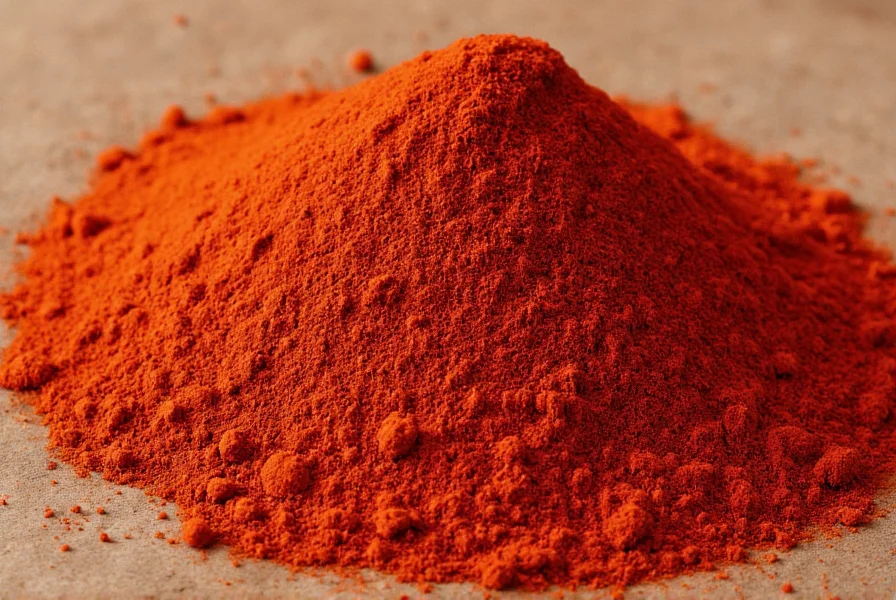Understanding the world of red spices opens up endless culinary possibilities. These vibrant ingredients not only enhance visual presentation but also contribute unique flavor dimensions to dishes across global cuisines. Let's explore the most popular red spices, their characteristics, and how to maximize their potential in your cooking.
Top Red Spices and Their Culinary Applications
Paprika stands as one of the most versatile red spices, available in sweet, smoked, and hot varieties. Hungarian paprika, considered the gold standard, contains sixteen distinct varieties ranging from delicate to pungent. When selecting paprika, look for deep red color and aromatic fragrance - dull or faded powder indicates age and diminished flavor. Properly stored in an airtight container away from light, quality paprika maintains its vibrant color and flavor for up to six months.

Cayenne pepper delivers significant heat with a Scoville rating between 30,000-50,000 units. Unlike paprika, which often features ground sweet peppers, cayenne comes from fiery chili varieties. This spice enhances circulation and metabolism, making it popular in wellness-focused recipes. When handling cayenne, wear gloves to prevent skin irritation, and always add gradually to dishes - a little goes a long way in providing that characteristic kick.
Saffron, the world's most expensive spice by weight, offers a distinctive golden-red hue rather than pure red. Each thread comes from the delicate stigma of crocus flowers, requiring approximately 75,000 blossoms to produce just one pound. Authentic saffron imparts floral notes with subtle honey undertones, perfect for paella, bouillabaisse, and Persian rice dishes. Be cautious of counterfeit saffron - genuine threads should release a rich yellow-orange color when steeped in warm liquid, not an immediate red dye.
| Red Spice | Heat Level (Scoville) | Primary Flavor Notes | Best Culinary Uses |
|---|---|---|---|
| Sweet Paprika | 100-500 | Earthy, sweet, bell pepper | Goulash, deviled eggs, roasted vegetables |
| Smoked Paprika | 100-2,000 | Smoky, woody, slightly sweet | BBQ rubs, bean dishes, paella |
| Cayenne Pepper | 30,000-50,000 | Sharp, pungent, fiery | Hot sauces, Cajun cuisine, stir-fries |
| Red Chili Powder | 500-1,000 | Warm, slightly fruity | Tacos, enchiladas, chili con carne |
Health Benefits of Red Spices
Research shows that many red spices contain significant antioxidant properties. Capsaicin, the compound responsible for heat in cayenne and chili peppers, has demonstrated potential in pain management and metabolism boosting. Studies published in the Journal of Agricultural and Food Chemistry indicate that paprika's carotenoids may support eye health and immune function. When incorporating red spices for health benefits, pair them with healthy fats like olive oil to enhance absorption of fat-soluble compounds.
For those exploring red spices that boost metabolism, cayenne pepper shows particular promise. The thermogenic effect of capsaicin temporarily increases metabolic rate, though experts recommend moderate consumption as part of a balanced diet rather than relying on spices alone for weight management. Understanding the difference between red pepper and paprika becomes crucial here - while both come from peppers, their processing creates distinct chemical profiles with varying health impacts.
Practical Tips for Cooking with Red Spices
Maximizing flavor from red spices requires proper technique. Bloom spices in hot oil before adding other ingredients to release essential oils and deepen flavor. For paprika specifically, never add it directly to boiling liquids as high heat can make it bitter - instead, incorporate it during the sautéing stage. When experimenting with red spices for Indian cuisine, Kashmiri red chili powder provides vibrant color without overwhelming heat, making it ideal for tandoori dishes and creamy sauces.

Storage significantly affects red spice quality. Exposure to light causes rapid degradation of color compounds - always store in opaque containers rather than clear spice jars. Humidity control proves equally important; consider adding silica packets to your spice drawer to prevent clumping. For long-term storage of bulk purchases, keep red spices in the freezer where they maintain potency for up to two years.
Common Substitutions and Pitfalls
When substituting between red spices, understanding flavor profiles prevents culinary disasters. Mistaking cayenne for paprika can transform a mild dish into an inedible firestorm. For recipes calling for smoked paprika when you only have regular, add a few drops of liquid smoke instead of doubling the quantity. Those seeking alternatives to expensive saffron might try a pinch of turmeric combined with a touch of red pepper for color, though the flavor profile differs significantly.
Many home cooks encounter issues with red spices bleeding color into dishes. To prevent this, mix spices with a small amount of oil or yogurt before incorporating into wet ingredients. When making tomato-based sauces, add red spices toward the end of cooking to preserve their vibrant hue, as prolonged heat causes color degradation. These practical techniques for using red spices in recipes ensure both visual appeal and balanced flavor.
Frequently Asked Questions
What's the difference between paprika and cayenne pepper?
Paprika typically comes from sweet or mild peppers and ranges from sweet to moderately hot (100-2,000 Scoville units), while cayenne pepper is made from hotter chili varieties with 30,000-50,000 Scoville units. Paprika offers earthy, sweet notes ideal for color and mild flavor, whereas cayenne provides significant heat with sharp, pungent characteristics. Never substitute equal amounts - use 1/8 teaspoon cayenne for every tablespoon of paprika to avoid overwhelming heat.
Why do some red spices lose their color over time?
Red spices contain light-sensitive compounds like carotenoids and capsaicinoids that degrade when exposed to UV light, oxygen, and moisture. Proper storage in airtight, opaque containers away from heat sources preserves color for 6-12 months. Freezing extends shelf life to 2 years. Avoid clear spice jars on sunny countertops - the combination of light and heat accelerates color fading and flavor loss.
Which red spices offer the most health benefits?
Cayenne pepper contains high levels of capsaicin, which studies link to improved circulation and metabolism. Paprika provides significant carotenoids supporting eye health. Turmeric (though more orange than red) offers curcumin with anti-inflammatory properties. For maximum benefit, combine red spices with healthy fats like olive oil to enhance absorption of fat-soluble compounds. Remember that moderate consumption as part of a balanced diet yields the best results.
How can I prevent red spices from making my dishes bitter?
Bitterness occurs when red spices like paprika are exposed to high heat for too long. Always add paprika during the sautéing stage before liquids, never directly to boiling sauces. Bloom spices in warm oil for 30-60 seconds to release flavors without burning. If bitterness occurs, balance with acid (lemon juice or vinegar) or sweetness (a pinch of sugar). For tomato-based dishes, add red spices in the last 10 minutes of cooking to preserve flavor integrity.











 浙公网安备
33010002000092号
浙公网安备
33010002000092号 浙B2-20120091-4
浙B2-20120091-4